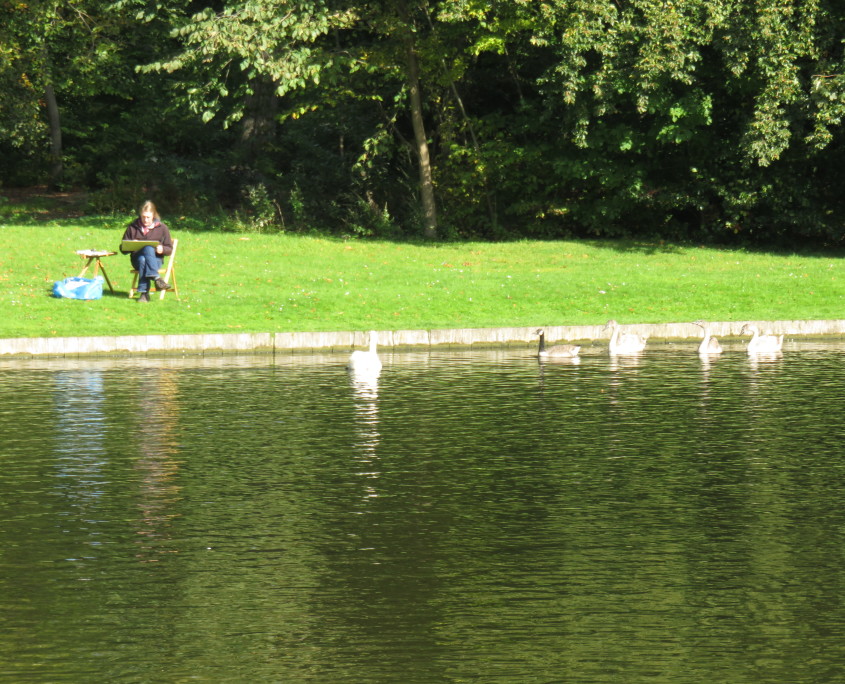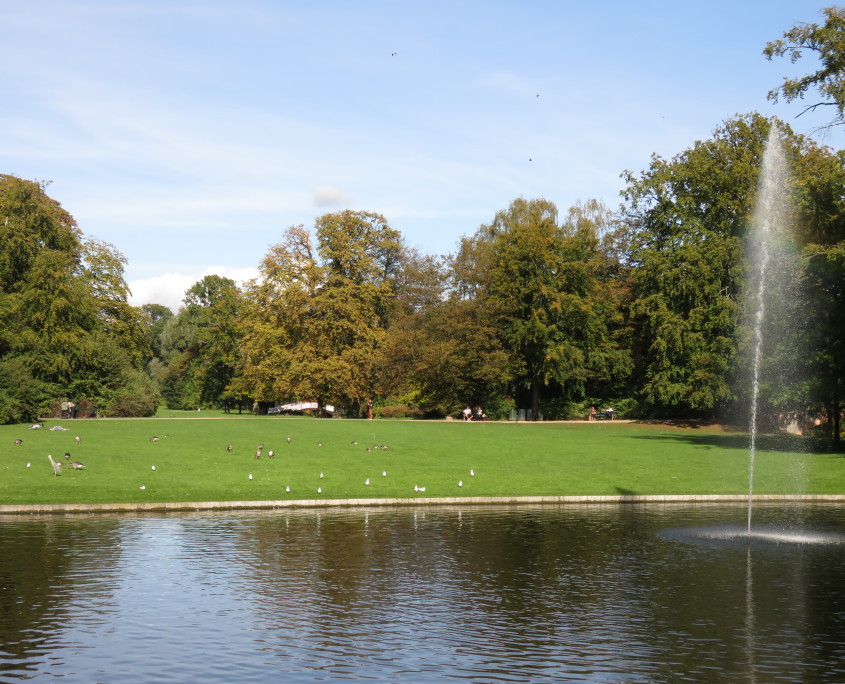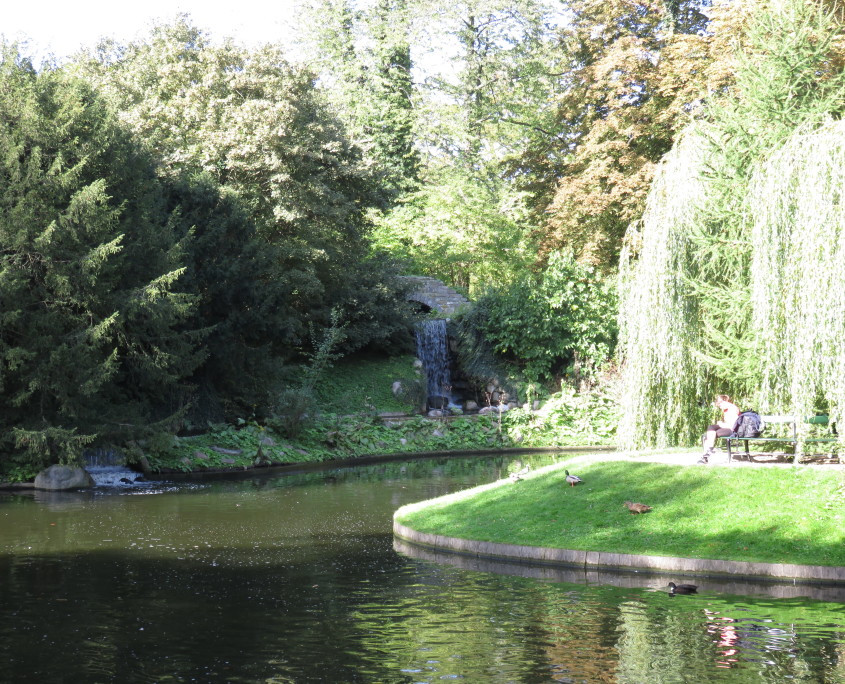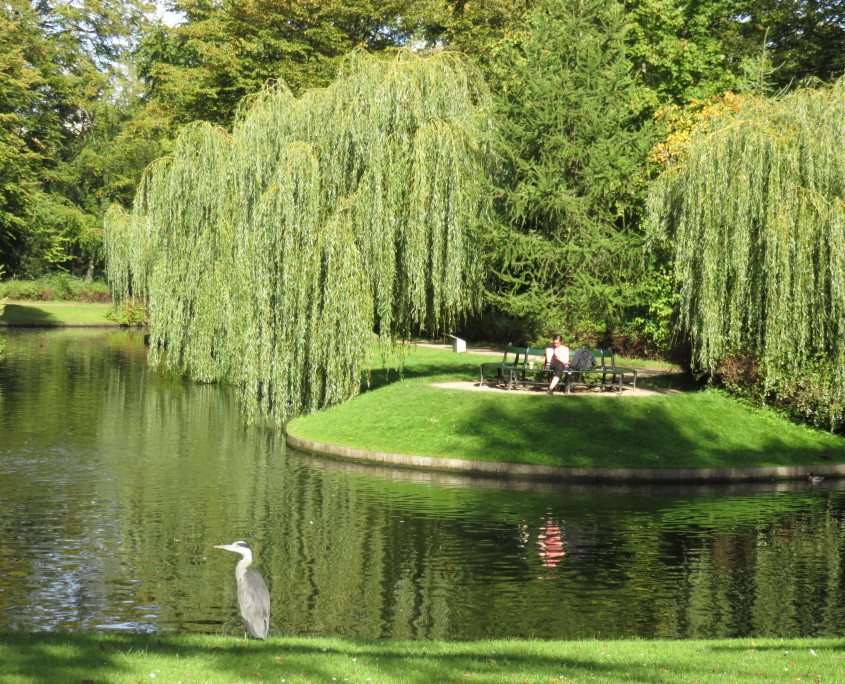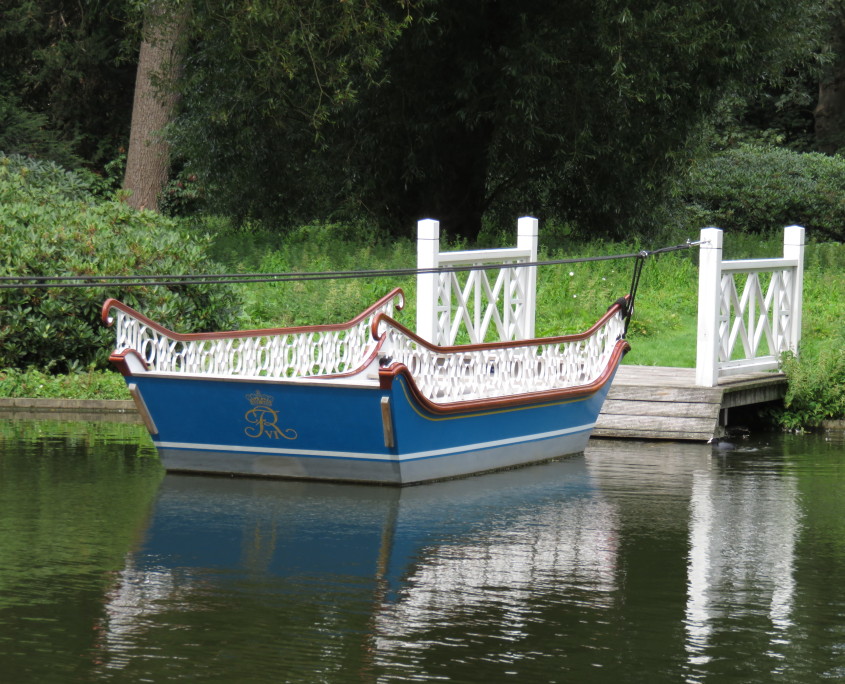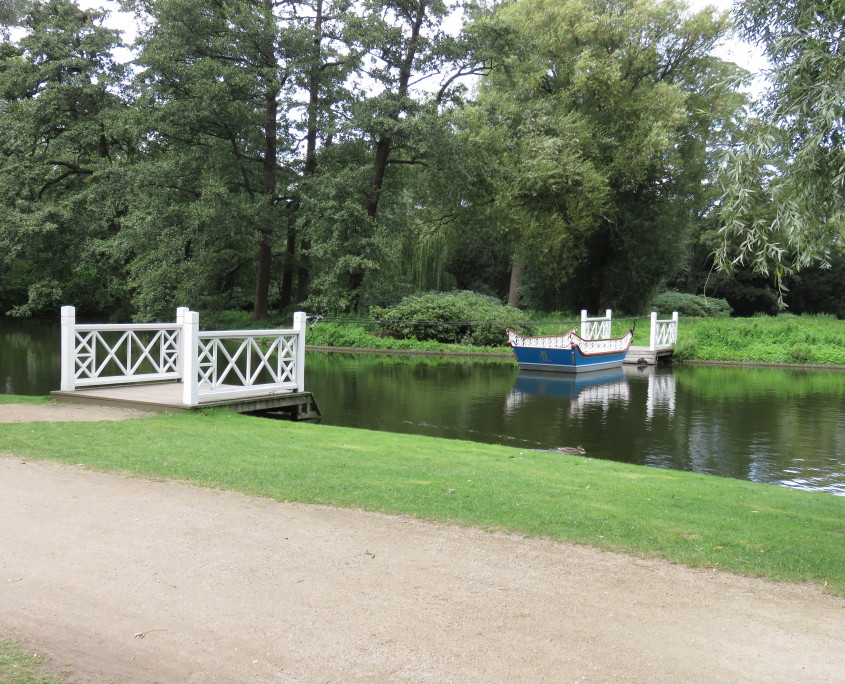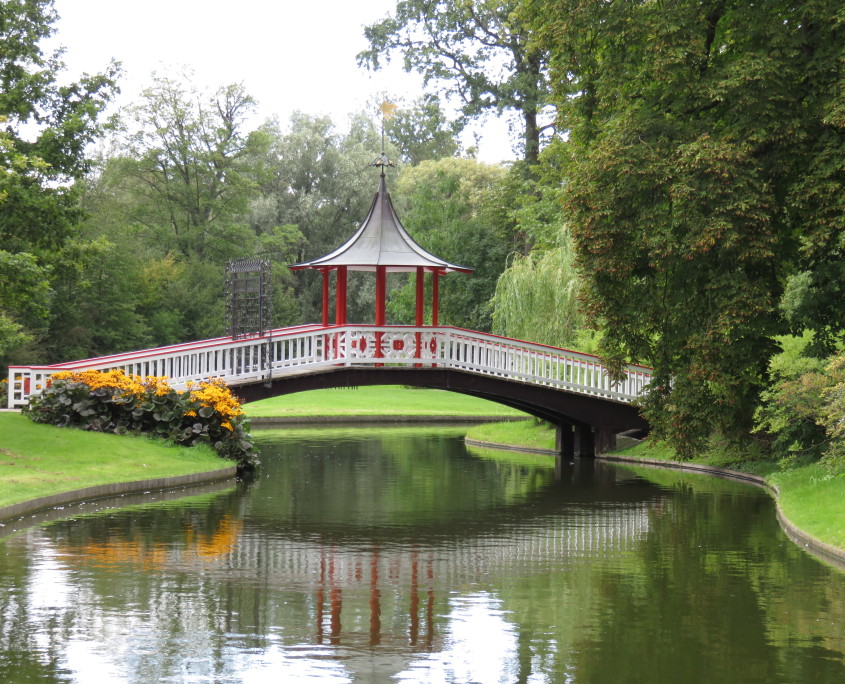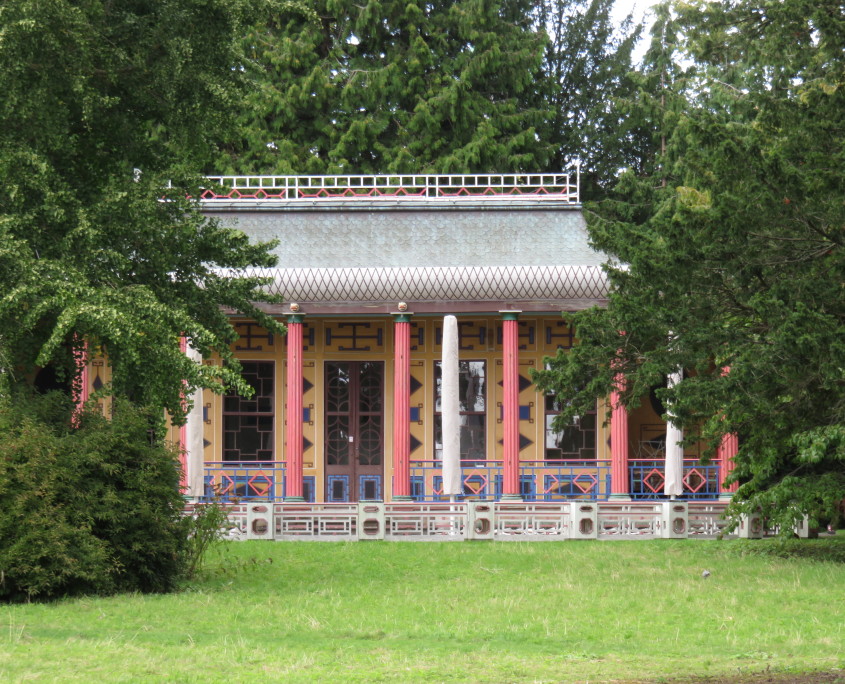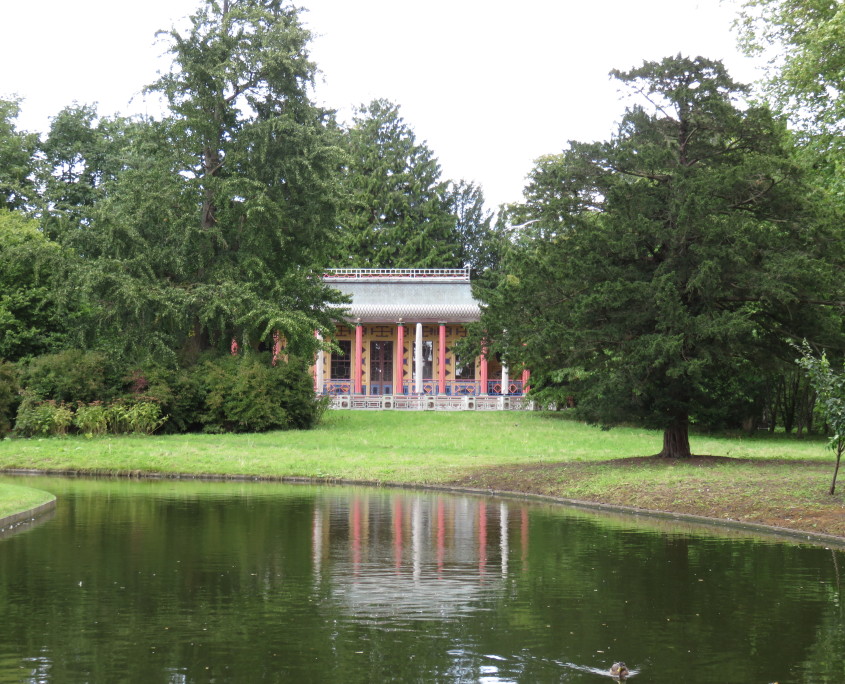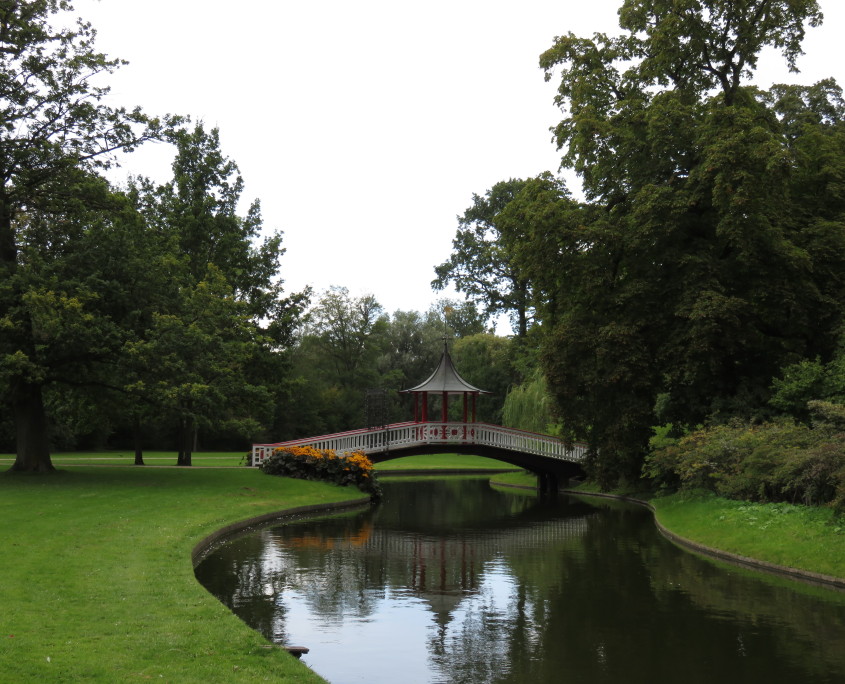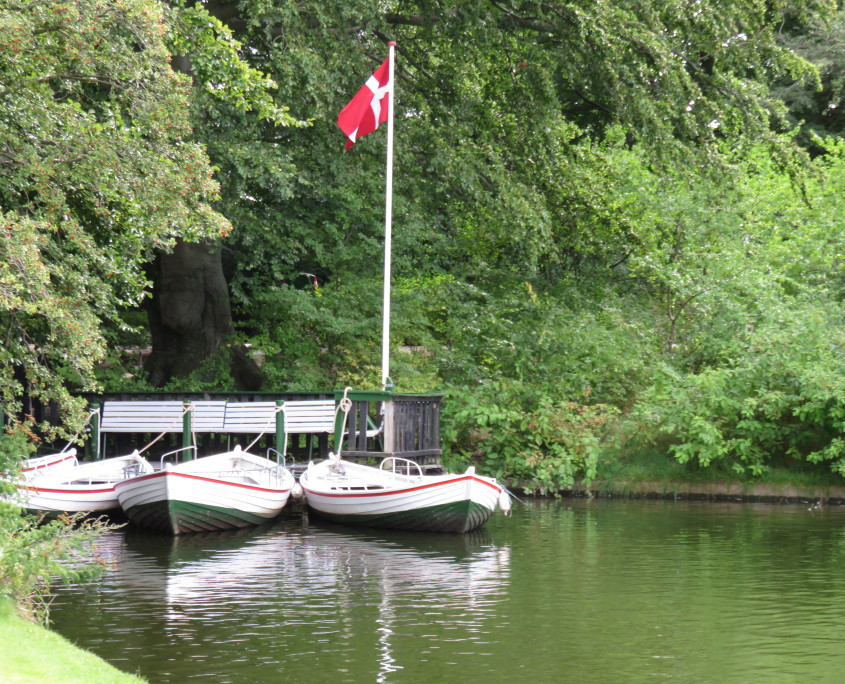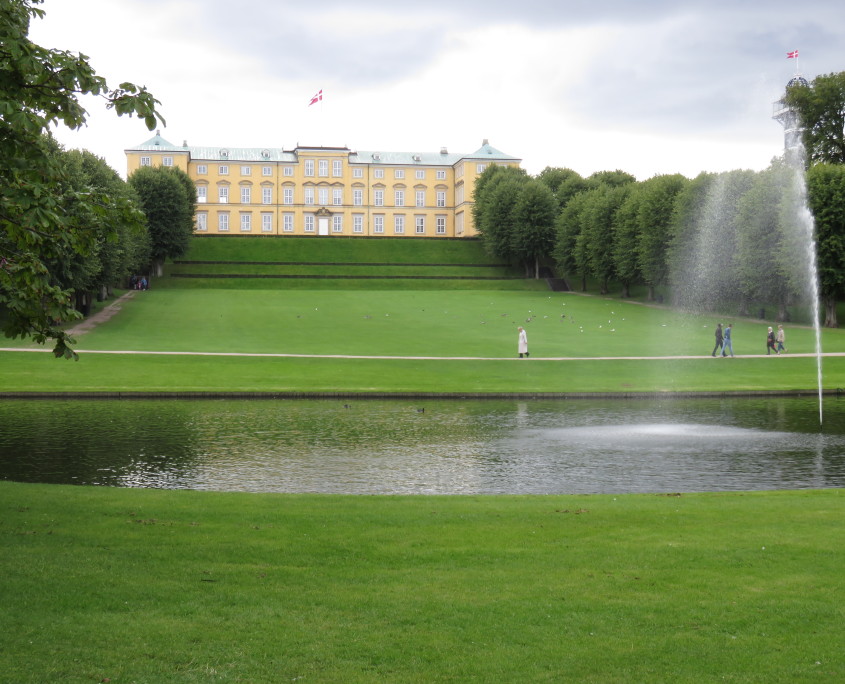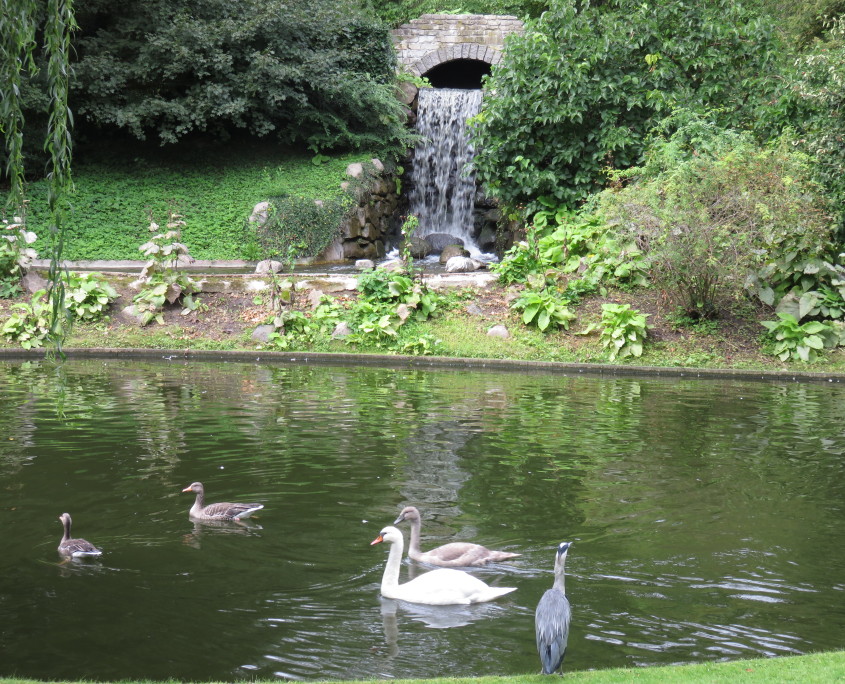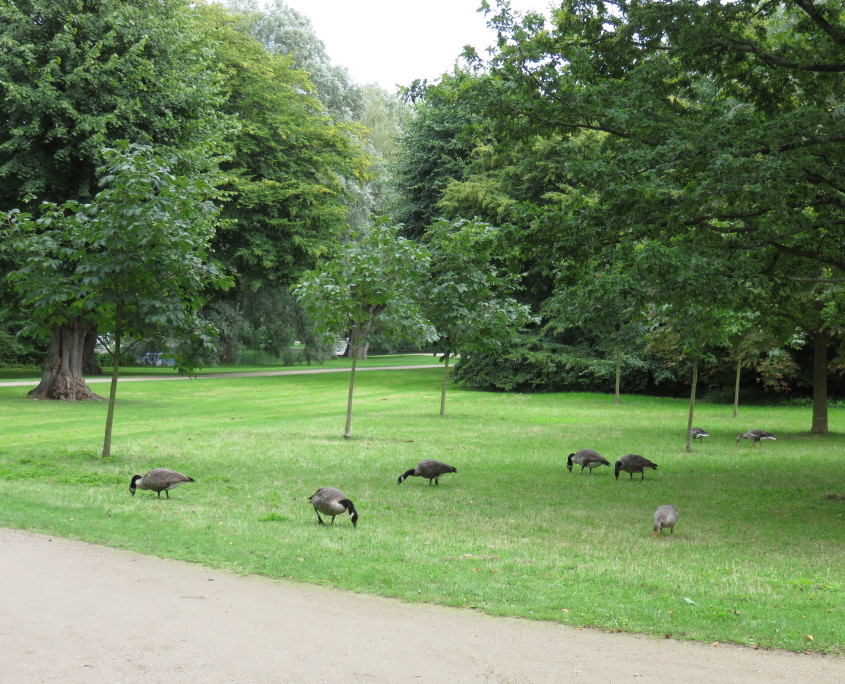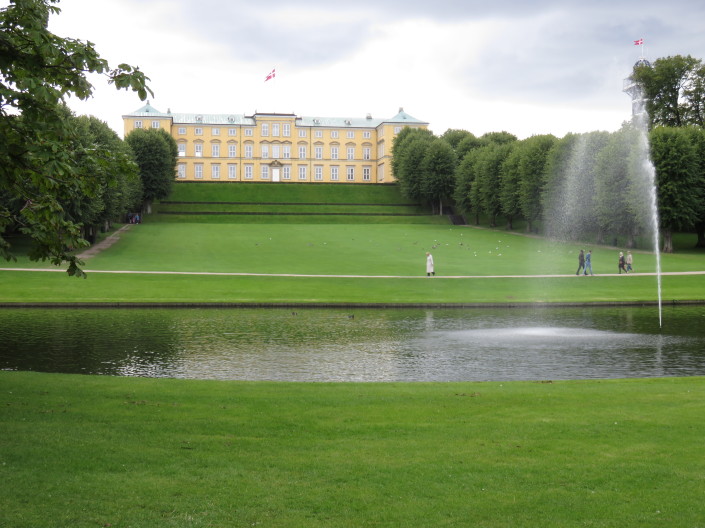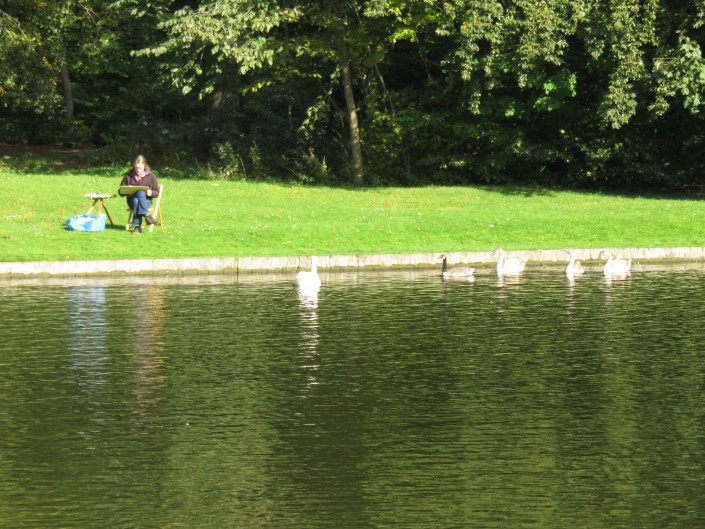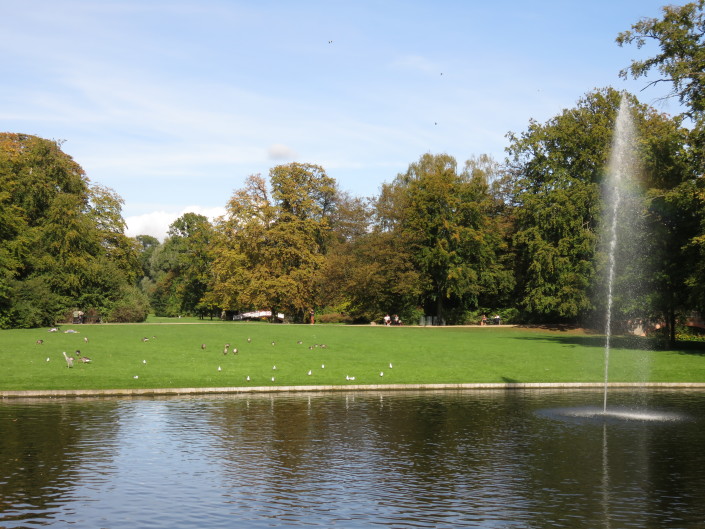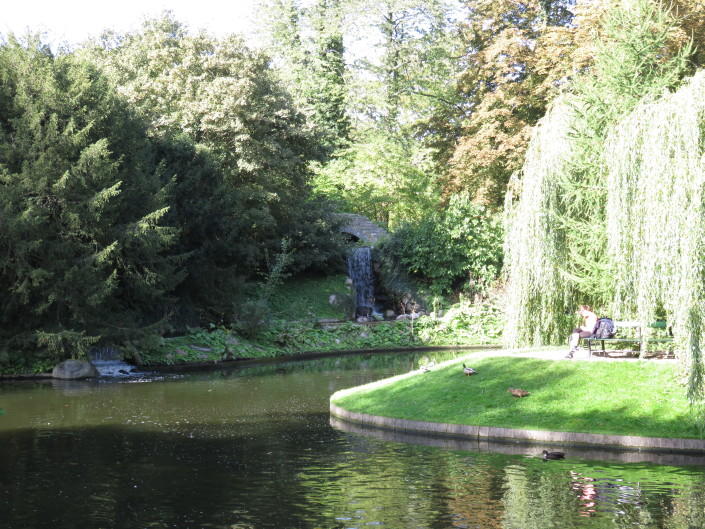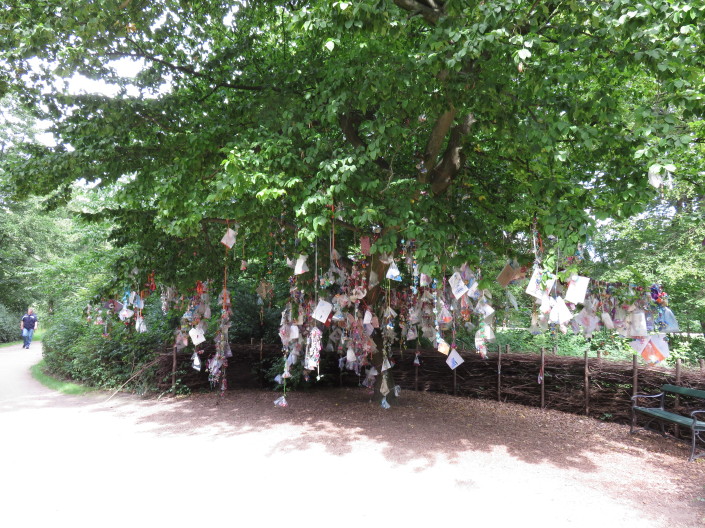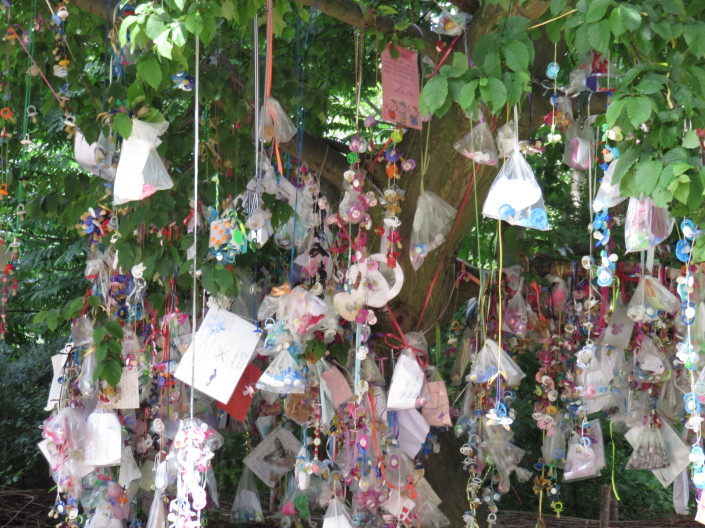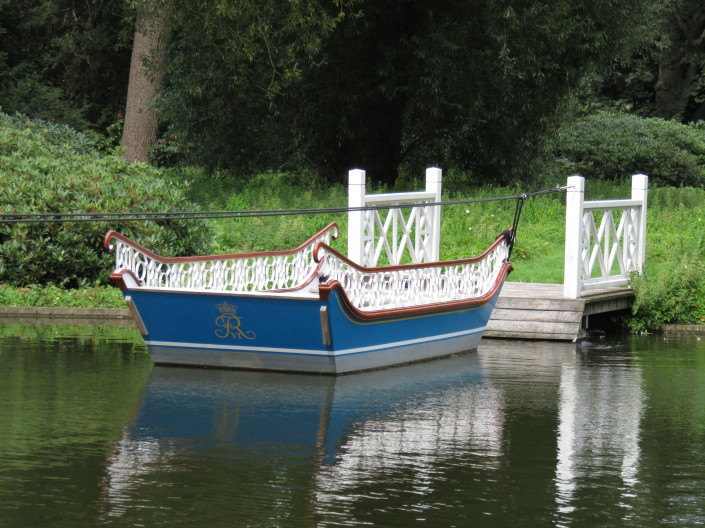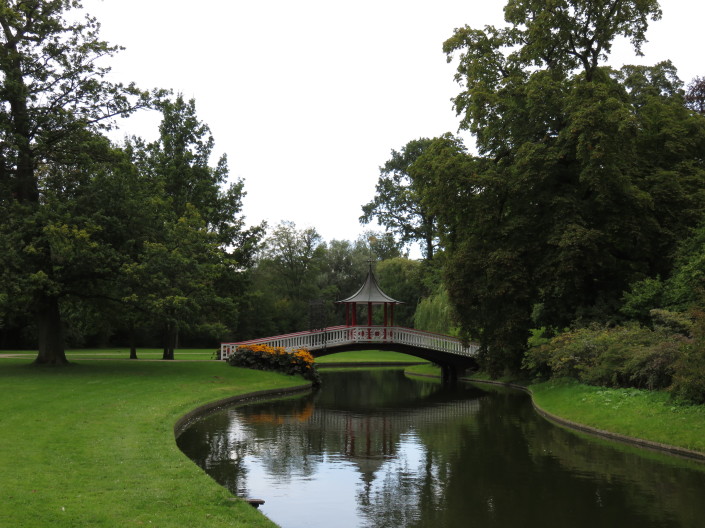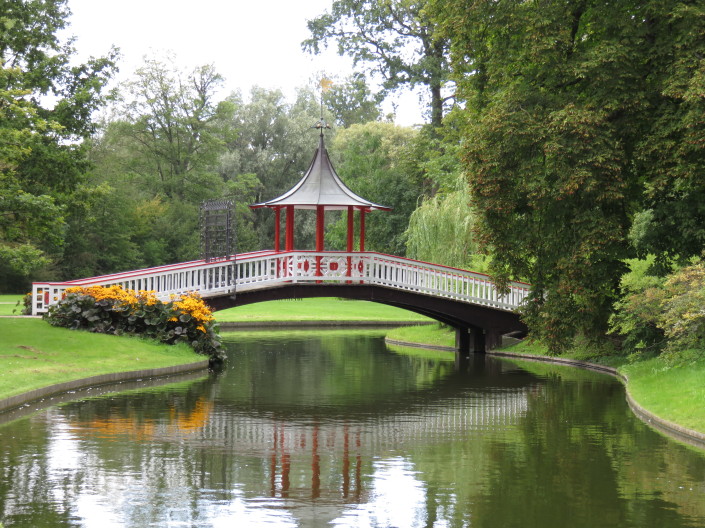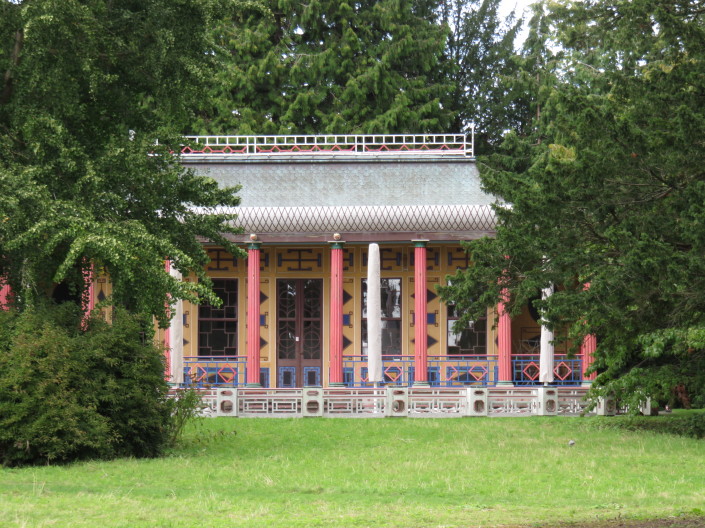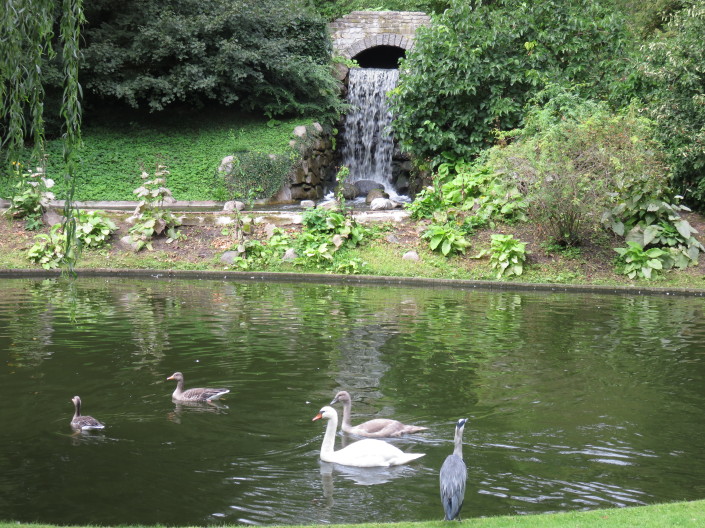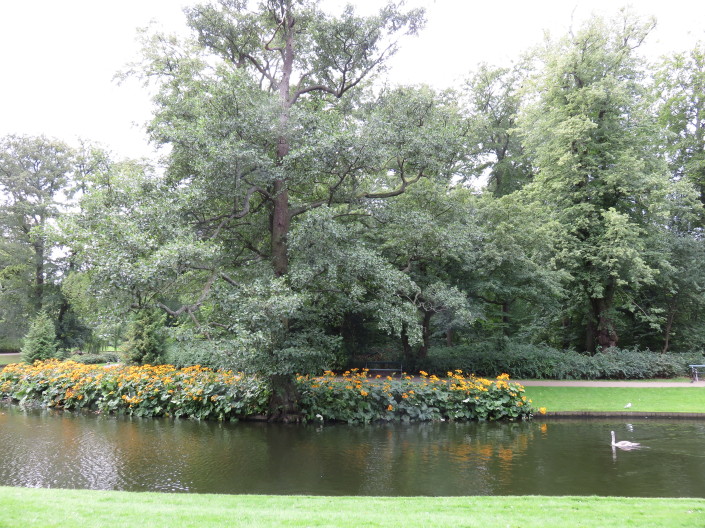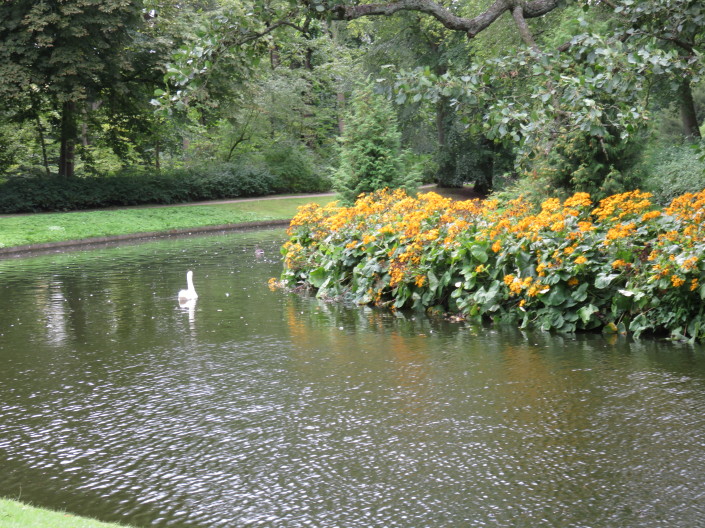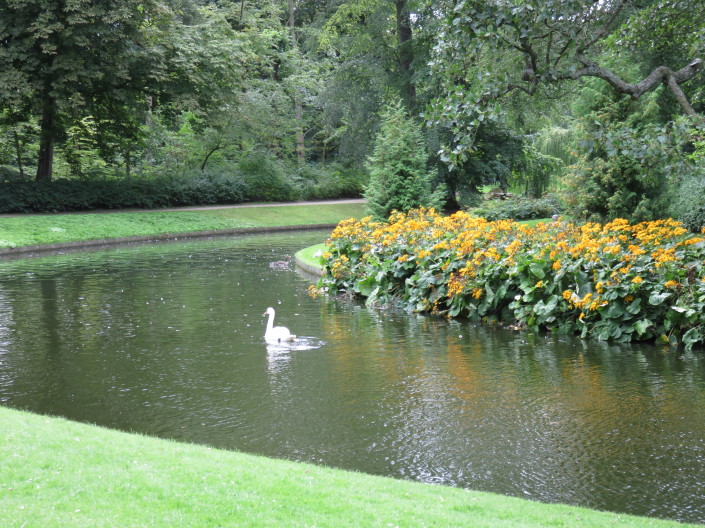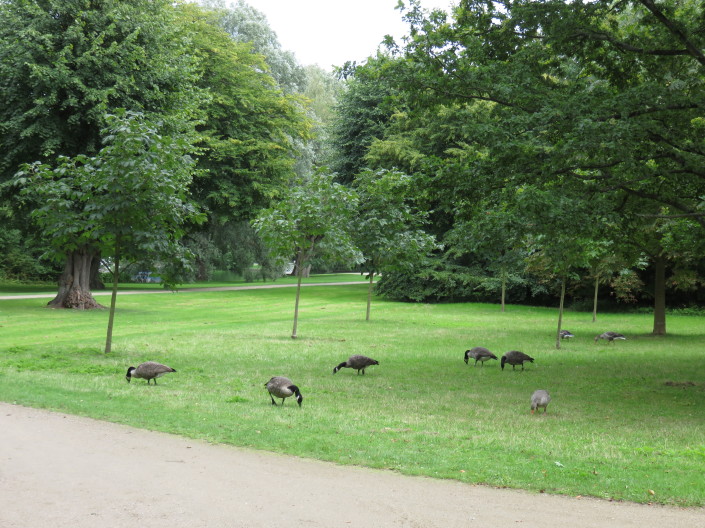Frederiksberg Have – Frederiksberg Garden
–
Frederiksberg Have (English: Frederiksberg Garden) is one of the largest and most attractive green spaces in Copenhagen, Denmark. Together with the adjacent Søndermarken, it forms a green area of 64 hectares at the western edge of Inner Copenhagen. It is a romantic landscape garden designed in the English style.
Frederiksberg Have was established by King Frederik IV in connection with the construction of Frederiksberg Palace as his new summer retreat on high grounds atop Valby Hill.
Work on the project began in the last half of the 1690s with inspiration from Italy and France, which Frederick had visited on several occasions.
The plan involved a parterre with a complex system of cascades on the sloping terrain in front of the new palace but this was changed into a series of terraces.
In about 1800, as fashion changed, the park was adapted into an English landscape garden and remodeled as a scenic garden with winding lawns, lakes, canals, and spinneys as well as grottos, temples, pavilions, and summerhouses.
The Palace garden was particularly used by King Frederik VI who spent much time on the grounds and sailing the canals in a gondola. Not until 1865 did access to the park become unrestricted.
The main entrance to Frederiksberg Gardens was, in its present form, built in 1755. The gate opens to a path between two long, yellow buildings with white details.
The Chinese summerhouse was completed in 1803 It was sited on a small artificial island accessible by a bridge which was built to a matching Chinese design.
Both the exterior and the interior have rich Chinese-inspired decorations, pictures, characters, and other ornaments, and there were bells on the roof.
The Apis Temple is located on the border of Copenhagen Zoo. It is named after the Egyptian bull-deity Apis which is depicted on the front. Decorations include the Ox Cranium Frieze and the Bull Relief, both carved in sandstone. The temple is occasionally open to the public and has been used for art exhibitions.
Like the Apis Temple, the Swiss Cottage lies in the part of the park that was incorporated when the park was redesigned in the Romantic style. It contains a hall, a cabinet, and some smaller rooms in which the royal family could take coffee after dinner or a stroll in the garden.
The cottage was built next to a small lake and the vegetation around the cottage was adapted, with conifers instead of deciduous trees, to create the right atmosphere of the setting.
Close to the Swiss Cottage is the Pheasantry in which pheasants for the royal household were raised. Later it served as a summer residence for the Danish poet Adam Oehlenschläger and his family.
Another garden feature is an artificial seven meters high waterfall.
When Norman Foster designed the new Elephant House for the adjacent Copenhagen Zoo, it was done as an extension of Frederiksberg Park. Now the visitors can watch the elephants while affording the elephants distant views as well.
Near the north entrance to the park, there is also a Soothers’ tree – a dummy tree – where children who no longer need their pacifiers leave them hanging on the tree, sometimes with a letter.
Every year on Midsummer Eve, the park is a rallying point for thousands of people who attend community singing, speeches, music, and a “witch”-burning bonfire at the lakeside in front of the palace.



